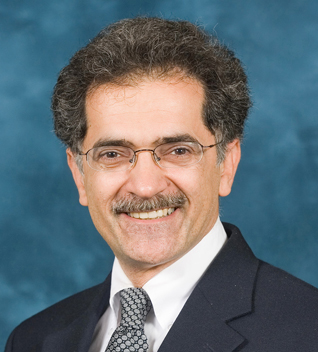Kamal Sarabandi receives Stephen S. Attwood award
The Stephen S. Attwood award is the highest honor awarded to a faculty member by the College of Engineering. Prof. Sarabandi has shaped the field of radar remote sensing for more than twenty years.

 Enlarge
Enlarge
Kamal Sarabandi, Rufus S. Teesdale Professor of Engineering, received the Stephen S. Attwood award, which is the highest honor awarded to a faculty member by the College of Engineering. It recognizes “extraordinary achievement in teaching, research, service, and other activities that have brought distinction to the College and University.”
Prof. Sarabandi has shaped the field of radar remote sensing for more than twenty years. His radar calibration techniques, miniaturized antenna designs, and SAR inversion algorithms represent seminal contributions to the field. His research addresses a wide range of electromagnetic topics, from collision avoidance radar to miniature antennas that are integrated on microchips. He is a world leader in the development of techniques to detect objects that may be either camouflaged or at a far distance. His research can be used to catalogue the vegetation of a forest to determine its robustness against global warming, or prevent loss of life by detecting weapons from a distance. His work in mapping hydraulic fractures may lead to the elimination of the problems associated with fracking.
He is Director of the $16M Center for Objective Microelectronics and Biomimetic Advanced Technology, which is designing the microelectronics that are the eyes, ears, and brains of insect-like drones. The center involves faculty in the related disciplines of microsensors, micropower digital circuits, advanced materials, and other areas.
He recently established a Center of Excellence for Microwave Sensor Technology with King Abdulaziz City for Science and Technology (KACST) in Saudi Arabia. The Center will be a major site for research in microwave sensor technology, with the first projects focusing on autonomous vehicles and novel approaches to electric vehicle charging.
This past year, he and his team constructed the most powerful radar calibration device in the world to interface with NASA’s newest orbiting satellite, called Soil Moisture Active Passive (SMAP). The goal is to measure the amount of water in moisture, which should ultimately to improve our ability to forecast the weather, monitor droughts, predict floods, enhance crop productivity, and understand the Earths water, energy, and carbon cycles. This is one of several radar systems he has developed for NASA space missions.
As an educator, Prof. Sarabandi exemplifies the qualities that mark great teachers and mentors. He regularly supervises a large group of graduate students, who in turn regularly win best paper awards and national and international conferences. Among his graduated doctoral students, 14 are faculty members, 11 work in federal laboratories, and 19 work in industry. He has taught a wide range of courses over the years, dividing his time between undergraduate and graduate classes, and receives extremely high approval ratings from the students.
Prof. Sarabandi is President of the IEEE Geoscience and Remote Sensing Society, and a member of the NASA Soil Moisture Active and Passive Science Team. His distinguished service to NASA has been recognized by a NASA Certificate of Appreciation. He recently served as a member of the National Academies’ Committee for Science and Technology Challenges to U.S. National Security Interests. He is also Director of the Radiation Laboratory at Michigan.
He has received the IEEE Geoscience and Remote Sensing Society Education Award and the IEEE Judith A. Resnik Award for outstanding contributions to space engineering. He has 13 patents, 236 journal articles, and 576 conference papers. Prof. Sarabandi co-founded EMAG Technologies, Inc. in 1994, which in turn has spun off three additional companies.
Prof. Sarabandi received a bachelor’s degree from Sharif University of Technology, two master’s degrees in electrical engineering and mathematics from the University of Michigan, and his PhD in electrical engineering also from the University of Michigan.

 MENU
MENU